
Mime
Source: Wikipedia. Pages: 110. Chapters: Mimes, Physical theatre, Charlie Chaplin, Buster Keaton, Pierrot, Richard Whittington, Harpo Marx, Alejandro Jodorowsky, Jean-Gaspard Deburau, Charles Deburau, Mummers Play, Paul Legrand, Complicite, Jacques Tati,... Viac o knihe
Produkt je dočasne nedostupný
23.85 €
bežná cena: 27.10 €
O knihe
Source: Wikipedia. Pages: 110. Chapters: Mimes, Physical theatre, Charlie Chaplin, Buster Keaton, Pierrot, Richard Whittington, Harpo Marx, Alejandro Jodorowsky, Jean-Gaspard Deburau, Charles Deburau, Mummers Play, Paul Legrand, Complicite, Jacques Tati, Marcel Marceau, Samy Molcho, Étienne Decroux, Mime artist, Lenka Pichlíková-Burke, Adam Darius, Jean-Marie Bottequin, George L. Fox, Bolek Polívka, Wolfe Bowart, Kneehigh Theatre, Bill Irwin, Norina Matchabelli, Margolis Brown Adaptors Company, Jacques Lecoq, Shields and Yarnell, Berwick Kaler, Modris Tenisons, Slava Polunin, Pat Keysell, Carlos Martínez, Daniel Stein, Adam Brown, Angna Enters, Magdalena Project, Double Edge Theatre, Jimmy Logan, Nola Rae, Alan Clay, Samuel Avital, Avner the Eccentric, Les Bubb, Glynn Nicholas, Lindsay Kemp, Tik and Tok, Kage Physical Theatre, Ireneusz Krosny, Jean-Louis Barrault, Philippe Gaulier, Corporeal mime, Jogesh Dutta, Ingemar Lindh, Oleg Popov, Yvonne Cartier, Hoipolloi, The Bakers Dozen, Bill Bowers, Henryk Tomaszewski, Niels Bjørn Larsen, Tony Montanaro, Shock, DV8 Physical Theatre, Theatre de l'Ange Fou, Thomas Leabhart, Diceman, Tom Arnold, Richmond Shepard, Dumbshow, Dimitri, Bill Robison, Mummenschanz, Chotto Ookii Theatre Company, Wildworks, Hiroyasu Sasaki, Petra Massey, DEREVO, Pandemonium: the Lost and Found Orchestra, New Art Club, Daniel Richter, Vokes family, Ephia, Dan Puric, Zillur Rahman John, Jimmy Savo, Jump, Pablo Zibes, Adrian Pecknold, Achille Zavatta, Otto simánek, American Mime Theatre, Janet Carafa, Mime the Gap, Homerism, Erwin Dom Osen, Ladislav Fialka. Excerpt: Pierrot (French pronunciation: ) is a stock character of pantomime and Commedia dell'Arte whose origins are in the late 17th-century Italian troupe of players performing in Paris and known as the Comédie-Italienne; the name is a hypocorism of Pierre (Peter), via the suffix -ot. His character in postmodern popular culture-in poetry, fiction, the visual arts, as well as works for the stage, screen, and concert hall-is that of the sad clown, pining for love of Columbine, who usually breaks his heart and leaves him for Harlequin. Performing unmasked, with a whitened face, he wears a loose white blouse with large buttons and wide white pantaloons. Sometimes he appears with a frilled collaret and a hat, usually with a close-fitting crown and wide round brim, more rarely with a conical shape like a dunce's cap. But most frequently, since his reincarnation under Jean-Gaspard Deburau, he wears neither collar nor hat, only a black skullcap. The defining characteristic of Pierrot is his naïveté: he is seen as a fool, always the butt of pranks, yet nonetheless trusting. It was a generally buffoonish Pierrot that held the European stage for the first two centuries of his history. And yet early signs of a respectful, even sympathetic attitude toward the character appeared in the plays of Jean-François Regnard and in the paintings of Antoine Watteau, an attitude that would deepen in the 19th century, after the Romantics claimed the figure as their own. For Jules Janin and Théophile Gautier, Pierrot was not a fool but an avatar of the post-Revolutionary People, struggling, sometimes tragically, to secure a place in the bourgeois world. And subsequent artistic/cultural movements found him equally amenable to their cause: the Decadents turned him, like themselves, into a disillusioned disciple of Schopenhauer, a foe of Woman and of callow idealism; the Symbolists saw him as a l...
- Vydavateľstvo: Books LLC, Reference Series
- Formát: Paperback
- Jazyk:
- ISBN: 9781156536650


 Anglický jazyk
Anglický jazyk 
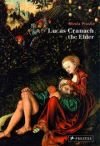
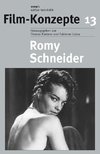
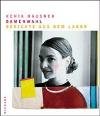

 Ruský jazyk
Ruský jazyk 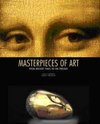
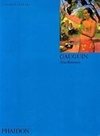
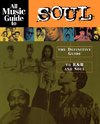
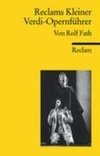
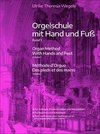
 Nemecký jazyk
Nemecký jazyk 